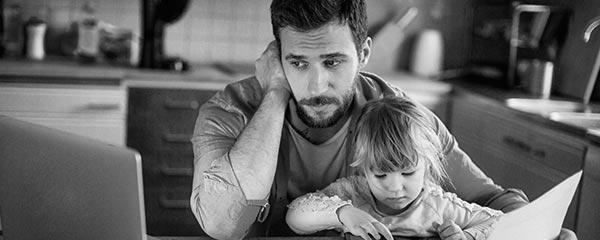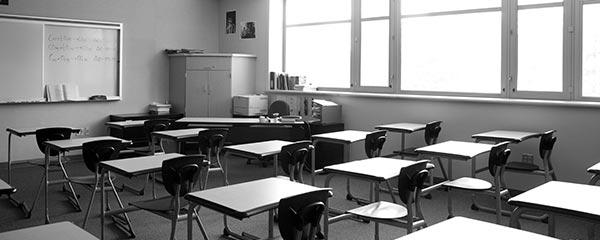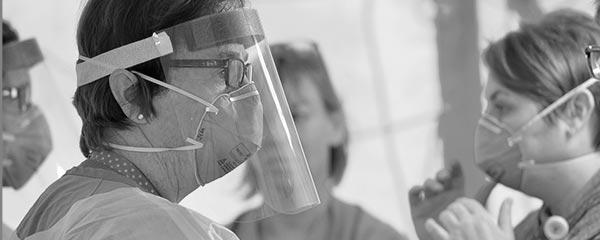The central organizational pattern of most modern religions in the U.S. is group worship, which has temporarily for the most part been mandated out of existence. The most dramatic result has been the exceedingly quick shift of religious services from in-person to virtual, online worship.
The abrupt cessation of in-person worship in churches, synagogues and mosques around the country is one of the most significant sudden disruptions in the practice of religion in U.S. history. But "virtual" worship is certainly not a new concept in this country. For almost a century, religious entities have been using "new" methods of communication to reach vast audiences -- first radio, then television; and, in recent years, well before the current COVID-19 virus crisis, online technologies.
Evangelists, preachers, priests and other religious leaders have been broadcasting on radio since the 1920s, and many began adding television to their broadcast repertoire when this new medium became available (giving rise to the term "televangelists").
The late, famed evangelist Billy Graham held religious rallies in venues around the world during his more than half-century career, but he also continually broadcast his services and programming on both radio and television. And to this day, the Billy Graham Evangelistic Association continues that legacy, adding in online broadcasts. Many pastors of Christian megachurches are as renowned for their television ministries as for their in-person worship services.
Individual churches also began broadcasting their services on radio -- and then television -- many years ago, and now whole radio stations, TV channels, cable and satellite networks are devoted solely to religious programming, including the Roman Catholic Church's CatholicTV. Many of these same religious groups have embraced the new technology of online broadcasting, and individual pastors and churches have been using the internet as a way of reaching an audience for years.
So the current transition to "virtual worship," while abrupt and forced on churches by the virus situation, is in many ways an extension of existing practices and not a brand-new frontier (similar to the way in which working remotely is not new, but an extension of what many were doing already). What is new is that almost all services -- particularly for smaller, local community churches -- can no longer be held in person, and many churches have moved to holding them virtually.
The long-term question is what impact all of this will have when social distancing mandates are removed. This parallels the long-term impact of moving many workers out of their offices and into remote work. I'm not aware of systematic studies assessing whether the fact that many church services and religious programs have been available on radio and on television for decades (and more recently online) has affected in-person church attendance. (Most religious leaders would no doubt say that virtual worship is a complement to, not a replacement for, in-person worship.)
in the current situation. Pew went back and interviewed respondents in their panel group who last year said they attended church at least once or twice a month. Slightly fewer than six in 10 in this group said they were attending religious services in person less often than they had in the past. About the same percentage in response to a separate question said they were watching services online or on TV instead of attending in person.
Not all of those who said they were attending less often in person said they were watching virtually (or on TV), and not all of those who were watching virtually (or on TV) said they were attending in person less often. All in all, Pew calculates that about four in 10 who reported attending church last year fit the profile of now attending less often in person and watching online or on TV as a replacement.
A to provide a semblance of community worship while maintaining social distancing (a practice, Time noted, that began in the 1950s when the Rev. Robert Schuller began drive-in worship in Orange County, California, although not then for social distancing reasons).
We also have some evidence from the impact of the Sept. 11, 2001, terrorist attacks on long-term changes in church attendance. At the time, there was speculation that the attacks would spark a significant and sustained increase in churchgoing. However, follow-up analyses generally suggested that this did not occur. I was involved in analysis of Â鶹´«Ã½AV data after 9/11, and by December 2001 we reported: "Church attendance is one of the putative changes in religion [as a result of 9/11] that has received the most discussion. There was a great deal of anecdotal evidence that the pews in churches, synagogues and other houses of worship were filled to capacity in the week or two immediately after the terrorist attacks. But the answers to our classic Â鶹´«Ã½AV question, 'Did you yourself happen to attend church or synagogue in the last seven days, or not?' show no lasting change. ... Church attendance as measured by this question has settled right back down to where it was."
Other studies showed similar results. A found "little evidence that many Americans who were not actively religious prior to the attacks have turned to religion in the wake of the crisis. Attendance at religious services is comparable to March [2001] levels."
Bottom line: The long-term impact of the coronavirus crisis on in-person church attendance is critically important, and it will take months or years to arrive at an overall estimate of the effect (if any).
Could the Virus Situation Have a Long-Term Impact on Personal Religiosity?
Personal religiousness is not directly affected by government social distancing mandates, but, of course, it may well be affected by the COVID-19 crisis per se.
As was the case after the 9/11 terrorist attacks, some observers have hypothesized that the American public will become more religious as they confront the situation and become more cognizant of their mortality and life's fragile essence. ("There are no atheists in foxholes.")
As , "Could a rogue virus lead to a grand creative moment in America's history? Will Americans, shaken by the reality of a risky universe, rediscover the God who proclaimed himself sovereign over every catastrophe?"
We have some preliminary evidence from recent Â鶹´«Ã½AV polling. Â鶹´«Ã½AV is asking Americans in its panel study about the impact of the virus on several aspects of their lives, including the amount of exercise they get, their diet, their personal relationships, their mental health -- and their faith or spirituality.
About half or more of Americans, interestingly, say the virus situation has not affected any of these five aspects of their life in either a positive or negative direction. In other words, Americans' mental and physical states of life appear hard to change. But, out of the five aspects tested, the net "gotten better" versus "gotten worse" gap is the most positive for the faith or spirituality dimension. Overall, 19% of Americans interviewed between March 28 and April 1 said their faith or spirituality has gotten better as a result of the crisis, while 3% say it has gotten worse, for a net of +16 percentage points. The only other of the five aspects tested that has a net positive is "personal relationships," at +5. More Americans, by contrast, say their mental health, diet and exercise have gotten worse than say they have gotten better.
The wording of this question may not pick up all of the impact of the virus situation on religion, because some Americans could say that their preexisting faith has deepened or become more important, but not really gotten better. But the fact that almost one in five Americans report that their faith or spirituality has gotten better as a result of the virus situation suggests the possibility of some sort of religious renaissance.
The Potentially Positive Impact of Religion and Religious People
One of the traditional roles of religious individuals and religious entities has been to serve a positive, integrative, pro-social, charitable function in crisis situations. As , "When it comes to confronting contemporary social turmoil, communities of faith have always played an important role in working toward solutions."
We don't have quantitative evidence on the degree to which religious individuals and religious organizations are working to help others in their communities affected by the virus, although there is anecdotal evidence suggesting this is the case.
Religious Americans could also affect the current virus situation in less directly tangible ways, through prayer. President Donald Trump established March 15, 2020, as a National Day of Prayer "for all Americans affected by the coronavirus pandemic and for our national response efforts." Trump said: "I urge Americans of all faiths and religious traditions and backgrounds to offer prayers for all those affected, including people who have suffered harm or lost loved ones."
in this situation, and found that over half of all Americans, 55%, say they have prayed for an end to the spread of the coronavirus situation, and among some groups that percentage is significantly higher. This includes about eight in 10 evangelical Protestants and black Protestants, and about two-thirds of Catholics.
Sociologists consider religion to be a major social institution that can serve a significant integrative function in and for society, providing society with a major stabilizing force. A great deal of research, including analyses of Â鶹´«Ã½AV data conducted by myself and my colleagues, has established the positive correlation between personal religiosity and wellbeing. shows that religious Americans were better able than those who were less religious to weather the economic storm of the 2008 recession, at least in terms of wellbeing. Thus, how religious Americans cope with today's unprecedented disruption to the normal practice of their faith could have larger implications for the overall wellbeing of society.




